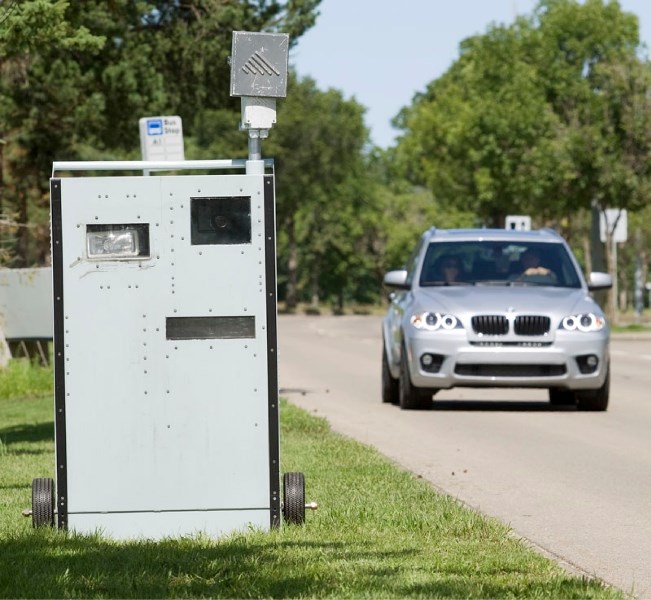Now hiding in a neighbourhood near you: another photo radar camera that’s poised to snap if your driving foot gets too heavy.
The city began using a new remote photo radar camera this week. Rather than sitting on a vehicle’s front bumper, the portable box sits alone by the roadside, connected wirelessly to a manned parent vehicle parked some distance away.
Traffic enforcers will operate the new camera in locations where they feel a vehicle would be unsafe or impractical, such as intersections, construction and school zones.
“The intent [isn’t] to hide it better,” said manager of policing services Aaron Giesbrecht. “The intent is to get into locations where the vehicles can’t.”
This means less damage to infrastructure and fewer disturbances for residents near the enforcement locations, he said.
The camera requires an operator, who sits in a vehicle in the area to monitor traffic, he said.
The remote camera is projected to generate net revenues of $50,000 a year. Such cameras are already being used in municipalities like Lethbridge and Strathcona County.
Mayor Nolan Crouse likes the idea because he regularly hears complaints about photo radar vehicles damaging city boulevards.
Photo radar is often criticized for being a cash cow but Crouse isn’t sorry about that.
“It creates extra cash for the community that the community wouldn’t otherwise have. I never apologize for that,” Crouse said. “If you don’t want to pay a photo-radar ticket, don’t speed.”
In 2010 the city netted $1.5 million from photo enforcement fines, which includes violations caught by photo radar, red light and speed-on-green. Previous studies have shown that as many as half the violators were from out of town, Crouse said.
He’d like to see the city move away from vehicle-mounted cameras to the more versatile remote type, then eventually, pole-mounted ones.
The remote camera will operate in addition to the two vehicle-mounted units the city already employs. All three are part of a deal the city has with a third-party contractor. The two vehicle units operate for a combined 14 to 16 hours per day, said Chris Jardine, general manager of community and protective services.
The city needed a third photo radar unit because of growth and increased traffic, he said.
He insisted that the overarching purpose of the city’s photo enforcement program is to rein in speeding.
“At the end of the day that’s all about safety,” he said.




